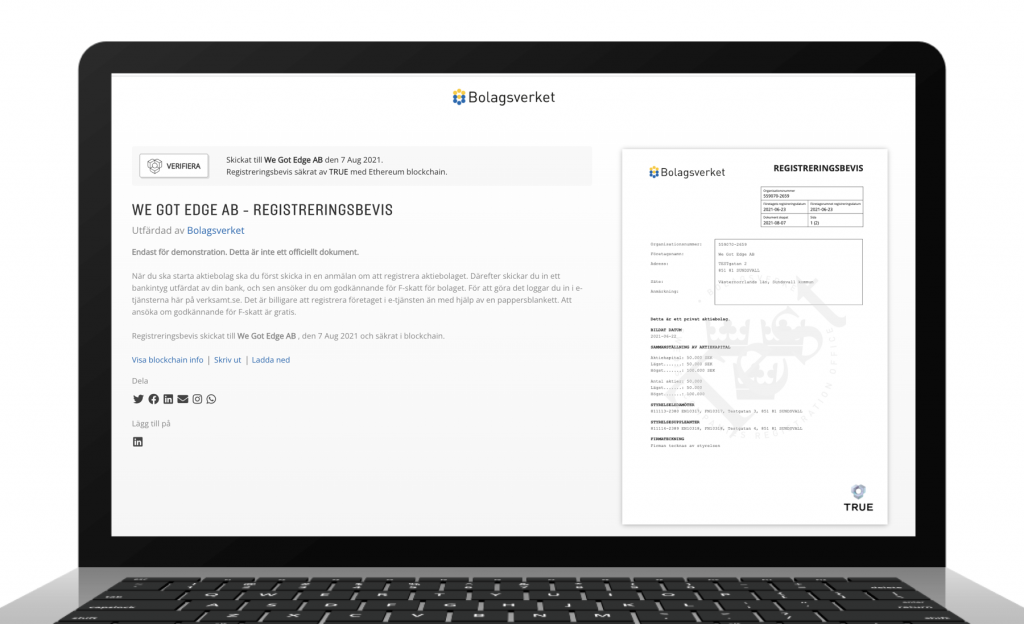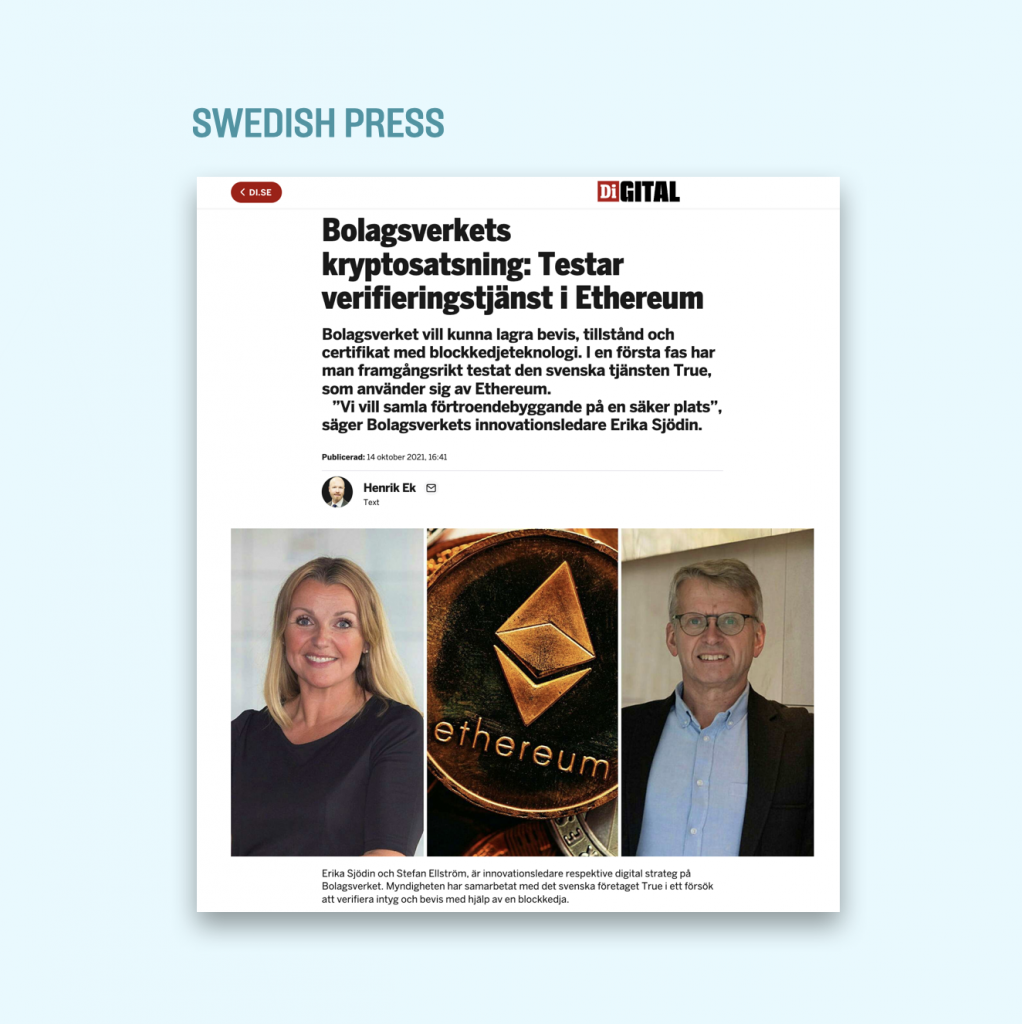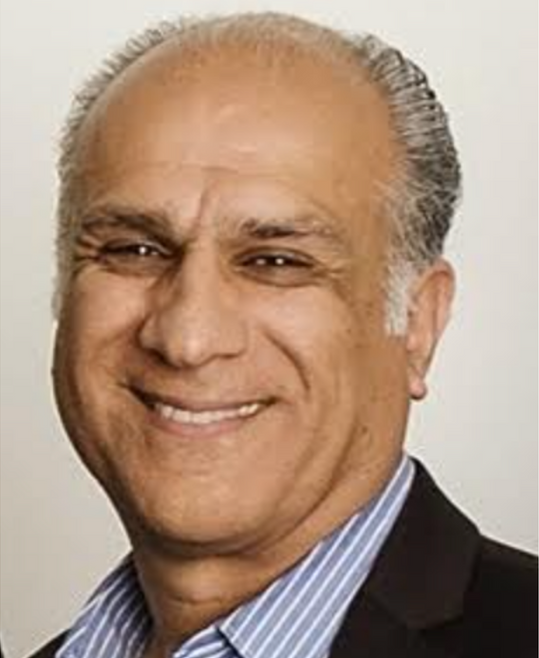(Originally posted in Dagens Industri – Swedish text)
The Swedish Companies Registration Office wants to be able to store certificates, permits and licenses, using blockchain technology.
In a first phase, the Swedish service True, which uses Ethereum, has been successfully tested. “We want to build trust in a safe place,” says the Erika Sjödin, Innovation Officer at Swedish Companies Registration Office’s (Bolagsverket).
What is stored in the blockchain cannot be manipulated, which has meant that the technology has for many years been pointed out as an extension of today’s internet.
Cryptocurrencies are the first example of widespread use of blockchain, but since Ethereum’s launch, a host of new crypto features have been made possible. Swedish company TRUE has developed a service for storing and securing official certificates and other documents on Ethereum. The company’s customers include educational institutions that use the technology to store diplomas and transcripts. Using TRUE, researchers at RISE (Swedish Research Institute) have also begun testing for a central storage of different proofs of education.
The latest organisation to test the technology is the Swedish Companies Registration Office
As recently as February 2021, a seed was sown for the idea, which and the work began in June.
“What we saw during the pandemic was that many started companies, and that’s very positive. But there is a lot of administration for new entrepreneurs and we wanted to see how help make that better, because our organisation wants to simplify and reduced reporting” says Erika Sjödin.
Erika and her colleague Stefan Ellström say that in addition to Certificates of Company Registrations, a number of different proofs and certificates is often needed in the process of starting a business. This includes documents from the Swedish Tax Agency and the Swedish Patent and Registration Office (PRV) but also, depending on the business, it could be permits and other approvals from your municipality – or several municipalities if you are active in more than one.

“Instead of having all these certificates and proofs stored in different places, which ensures that you are a trusted company, we want to create a secure platform where you as an entrepreneur can more easily collect these documents,” says Erika Sjödin, and is supported by Stefan Ellström: “With such a platform, you can in turn create secure relationships with business partners. It will also be easier to check that an organisation really have all valid proofs and approvals”, he says.
Several municipalities involved in the Proof of Concept
So far, the City of Helsingborg, Södertälje Municipality and PRV (Patent & Registrations Office) have been involved and contributed with test data. With the help of TRUE, setting up a so-called “Proof of Concept” took only eight weeks, according to Erika Sjödin and Stefan Ellström.
“We have just been given a government assignment to investigate this in a second phase. We must find the core; what should be involved and how we should build it technically, for real. It is about getting more people into this platform we want to create and building it in a way that fits in with other national and international initiatives, ”continues Stefan Ellström.
In March 2023, phase 2 will be finalized and then the Swedish Companies Registration Office will come up with a plan for how proof, permits and certificates can be found in the blockchain and function as a real verification service.
Could the application process to get the evidences also be handled safely in the blockchain?
“We have talked about how to best take advantage of all the opportunities that exist, but have come to the conclusion that in this step we will focus on permits and certificates. For example, serving permits, trademark protection, company registrations etc. But if we look a little further ahead, it can definitely be possible to use the technology for much more”, says Erika Sjödin.
“The documents are co-owned by the publishers and the recipients. So, if a recipient tells a publisher that ‘my name is misspelled’, they can then break the link between the document and the blockchain, and upload a new version. The old hash always remains, but without a connection to the incorrect document.”




